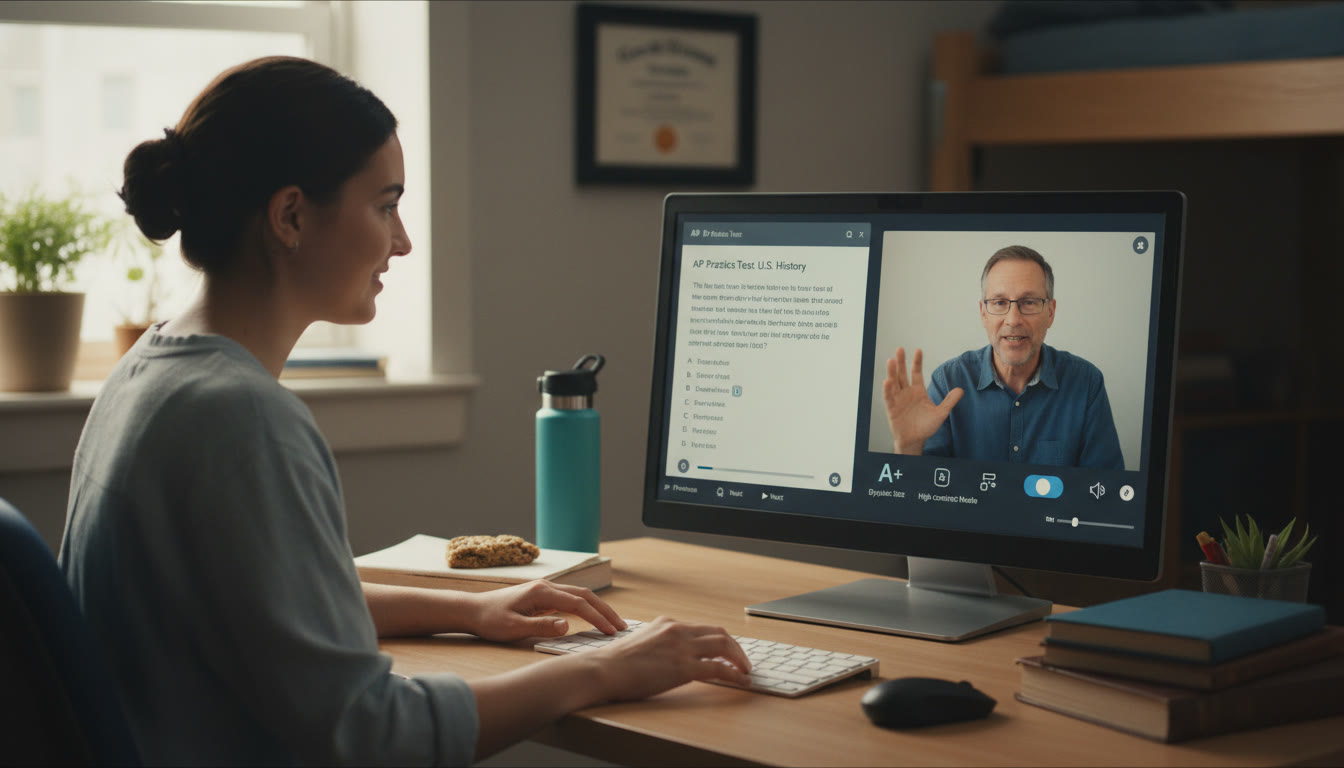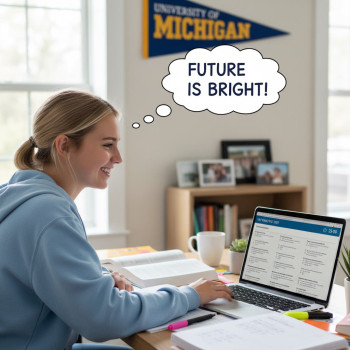AP vs SAT: The Big Picture Why This Matters
There s a lot riding on high school testing: college credit, admissions, scholarship opportunities, and confidence. For students with disabilities or documented needs, accommodations can level the playing field but the path to getting those accommodations differs in important ways between AP Exams and the Digital SAT. If you or your child has an IEP (Individualized Education Program) or a 504 Plan, this guide will help you understand the practical steps, documentation expectations, deadlines, and real-world tips so you can plan ahead without stress.

Who is this for?
This post is written for students preparing for AP Exams and the Digital SAT, their parents, and school coordinators. If your student currently receives school-based accommodations via an IEP or 504 Plan or you suspect they might benefit from them read on. I ll walk you through both systems, compare them side-by-side, and offer concrete examples and timelines. I ll also show where a tailored tutoring approach, such as Sparkl s personalized tutoring (1-on-1 guidance, tailored study plans, and AI-informed insights), can be especially helpful.
Foundations: What Does Accommodations Even Mean?
At its heart, an accommodation is any change in how a test is administered that allows a student with documented needs to demonstrate knowledge fairly. Accommodations do not alter the content or the standard being tested they change the method or environment. Common examples include extended time, large-print or braille test materials, a human reader or screen reader, scribing/writing assistance, preferential seating, and extra breaks.
IEPs and 504 Plans the school-based starting point
An IEP is a formal plan developed through the special education process that outlines specially designed instruction and supports for a student who qualifies under IDEA. A 504 Plan is created under Section 504 of the Rehabilitation Act; it lays out reasonable accommodations so that students with disabilities have access to learning. Both documents are strong evidence when requesting testing accommodations from College Board programs, but they re not automatic approvals they form the foundation for an SSD (Services for Students with Disabilities) request.
How AP Accommodations Work (High-level)
AP Exams are managed by the College Board s Services for Students with Disabilities (SSD). Most students who receive accommodations at school will likely be eligible for similar accommodations on AP Exams, but the school (typically an SSD coordinator or AP coordinator) must request approval from College Board in advance.
Key features of the AP accommodations process
- School-led requests: Typically the SSD coordinator at your high school submits requests via the College Board portal.
- Documentation: IEPs, 504 Plans, or other evaluation reports are commonly used. Additional documentation may be requested based on the accommodation.
- Approval window: Approvals should be obtained well before exam day College Board requires prior approval; using unapproved accommodations can lead to score cancellation.
- Accommodation differences by subject and format: Some accommodations translate differently for different AP subjects and may be different for digital vs. paper/hybrid tests (for example, embedded text-to-speech on digital exams vs. a human reader on paper tests).
- Duration: Once approved, accommodations typically remain in effect for College Board programs through the student s high school career (with certain time limits tied to graduation), but subject-specific differences may apply.
How Digital SAT Accommodations Work (High-level)
The Digital SAT also uses College Board s SSD process. Because the SAT is now delivered digitally, some accommodations may be given differently for instance, a screen reader or embedded accessibility features may replace a human reader in some cases. As with AP, prior approval is required and you must register your student as approved for accommodations before test day.
Key features of the Digital SAT accommodations process
- SSD approval required: Apply early; approval can take several weeks.
- Registration after approval: Once approved, students register for a test date as an accommodated test-taker.
- Digital-specific differences: The Digital SAT s delivery means some supports are built into the platform (e.g., adjustable fonts, color contrast, text-to-speech where appropriate), while others (like human scribes) may still need coordination.
- Modification windows: If accommodations change, notify SSD as early as possible some changes must be made ahead of test day.
AP vs SAT: A Side-by-Side Comparison
Below is a practical comparison designed to help families map decisions and deadlines. Use it as a checklist to talk with your school s SSD coordinator and plan next steps.
| Feature | AP Exams | Digital SAT |
|---|---|---|
| Who typically submits request | School SSD coordinator (school-led); family can submit paper request | School SSD coordinator or family (follow College Board SSD process) |
| Documentation used | IEP, 504 Plan, evaluation reports; may need specific testing history | IEP, 504 Plan, evaluation reports; documentation must show functional testing impact |
| Timing | Request well before AP exams; confirm accommodations in registration tools; deadlines tied to AP registration cycles | Apply early approval can take weeks; register after approval for a scheduled date |
| How accommodations delivered | Varies by subject and format; digital exams may use embedded tech; some accommodations differ across subjects | Digital platform offers built-in options; some human supports may be replaced by software features |
| What happens if not approved | Student tests without accommodations or may postpone/withdraw; unapproved accommodations on test day can lead to score cancellation | Student tests without accommodations or can change plans; accommodations cannot be added at test day |
Documentation Deep Dive: What to Include From Your IEP or 504
Not all paperwork is created equal. A clear, up-to-date, and functionally focused IEP or 504 Plan will make the SSD review smoother. Here s what helps the most.
Essential elements SSD reviewers look for
- Specific diagnosis or identified disability with date of identification and evaluator credentials.
- Clear description of how the disability affects test-taking (e.g., slow processing speed, reading decoding difficulties, visual impairment, fine motor challenges).
- Detailed accommodations currently used in classroom and on school assessments (not just a list include frequency, extent, and examples of how they are implemented).
- Recent assessment data or progress monitoring that shows current levels of performance and demonstrates continuing need.
- Signatures, dates, and contact details of school personnel involved in the plan (to allow verification if needed).
Tip: One-page summaries that highlight the above elements can be very helpful to SSD coordinators and reviewers. They distill the case and speed up the review.
Real-World Examples
Here are two short scenarios that show how the process plays out differently depending on needs and timing.
Example A Jamie (AP Calculus and AP English, has an IEP)
Jamie s IEP documents slow processing speed and extended time allowance for classroom tests. The school SSD coordinator submits an accommodations request for the AP Exams early in the school year. College Board approves extended time for AP Calculus and AP English, but notes that extra breaks were not included in the generic extended time approval and must be requested specifically for the AP English digital exam due to exam format differences. The coordinator confirms the specific accommodations in the AP Registration tool before exam ordering deadlines.
Example B Carlos (Digital SAT, 504 Plan for visual impairment)
Carlos has a 504 Plan for a visual impairment; he uses large-print materials and a magnification device in class. The family works with the school to submit SSD documentation for the Digital SAT. Because the Digital SAT platform offers built-in magnification and adjustable contrast, Carlos s approved accommodation is an embedded large-print display and extra time. He practices on the digital platform with similar settings and benefits from a targeted tutoring plan that simulates his accommodated test experience. His prep tutor (part of a personalized program like Sparkl) sets up practice runs that mirror his approved accommodations, reducing anxiety on test day.
Timing and Deadlines: Plan Like an Organizer
Deadlines matter. College Board s review process takes time and schools often have internal deadlines for placing accommodations requests. Here s a practical timeline to follow:
- As soon as possible: Talk to your school s SSD coordinator. If you suspect a need, don t wait until the test season.
- 3 4 months before intended test: Ensure documentation is current. If you need updated evaluations or assessments, schedule them now.
- 2 8 weeks for SSD review: SSD review times vary. Start early because approvals can take multiple weeks.
- After approval: Confirm accommodations in AP Registration or SAT registration systems and bring the SSD Eligibility Letter to test day when required.
Note: Some AP subjects and international test administrations may have specific additional steps or ordering deadlines; coordinate with your AP coordinator to be sure.
Testing Day Practical Tips for a Smooth Experience
Having accommodations approved is half the battle. Being prepared on test day makes the remaining half much easier.
- Bring your SSD Eligibility Letter and any required identification.
- Arrive early and let the test administrator know you have approved accommodations.
- Practice tests: Use practice sessions that mimic the accommodated environment (same device settings, same extra time ratios). This reduces surprises.
- Communicate: If something goes wrong with an accommodation (e.g., tech problems for a digital reader), report it immediately to the test center and follow up with SSD.
How Personalized Tutoring Helps Where Sparkl Fits In
Preparing under accommodations has a unique rhythm. Practice under the same conditions you ll see on test day. That s where one-on-one tutoring becomes invaluable. Personalized tutoring programs like Sparkl offer tailored study plans and expert tutors who can:
- Simulate the exact timing and platform settings (for digital testing) you ll experience.
- Create targeted practice around documented needs for instance, reading strategies for students with decoding challenges or time-management drills for students with processing speed issues.
- Provide emotional support and test-day routines to reduce anxiety and build confidence.
- Use AI-driven insights to identify small wins and prioritize high-impact practice areas, making each session efficient.
When tutors know a student s approved accommodations, they can design sessions that mimic those supports so practice is authentic and transferable.
Common Questions and Straightforward Answers
Q: If my child has an IEP, do they automatically get College Board accommodations?
A: No. An IEP or 504 Plan is strong evidence and often sufficient, but College Board s SSD office must approve accommodations in advance. The school s SSD coordinator typically submits the request. The better the documentation and the clearer the functional impact described, the smoother the approval process.
Q: Can accommodations granted for the SAT be used for AP Exams?
A: Often yes once College Board approves accommodations, they can apply across College Board programs (SAT, PSAT, AP), but there are nuances. Some accommodations are program- or subject-specific, and digital delivery can change how an accommodation is implemented. Confirm with your SSD coordinator and review each program s guidance.
Q: What if a requested accommodation is denied?
A: If an accommodation is denied, SSD will provide a rationale. You can work with your school to submit additional documentation, clarify the functional need, or appeal the decision. Starting this process early provides time for resubmission. A targeted tutor or advocate can help craft clarifying documentation or practice work samples.
Practical Checklist Before You Apply
- Gather your most recent IEP/504 Plan and any evaluation reports.
- Write a one-page summary describing functional testing impacts and current classroom accommodations.
- Meet with the school s SSD coordinator to confirm they will submit the request (or discuss the paper submission process if school won t).
- Plan practice sessions that mirror accommodated conditions consider enrolling in a personalized tutoring program that designs sessions to reflect those accommodations.
- Track key dates for AP registration and SSD deadlines; set calendar reminders.

Final Thoughts: Advocacy, Preparation, and Confidence
Getting accommodations approved can feel bureaucratic, and it sometimes takes patience. But the outcome a testing experience that reflects a student s true abilities is worth the effort. The essential ingredients are clear documentation, early planning, honest communication with your school s SSD coordinator, and practice that mirrors the approved accommodations.
Remember: accommodations are about access, not advantage. They help students show what they know. With thoughtful preparation, realistic practice, and the right support whether that s an informed SSD coordinator, a helpful teacher, or a personalized tutor like Sparkl who tailors sessions to the student s approved accommodations students can approach AP Exams and the Digital SAT with confidence and calm.
One Last Tip
Keep copies of everything: your IEP/504, SSD approval letters, correspondence, and dated notes from meetings with school staff. When in doubt, document. Having the paper trail keeps the process moving and protects the student s rights.
Need help getting started?
Talk with your school s SSD coordinator first. If you d like prep that mirrors approved accommodations or personalized coaching to manage timing and strategy, consider a tutor who specializes in accommodated test prep and works with your student s SSD documentation. A little early work can make test day feel familiar and fair.
Good luck and remember: being prepared and supported matters more than any one score.

















No Comments
Leave a comment Cancel